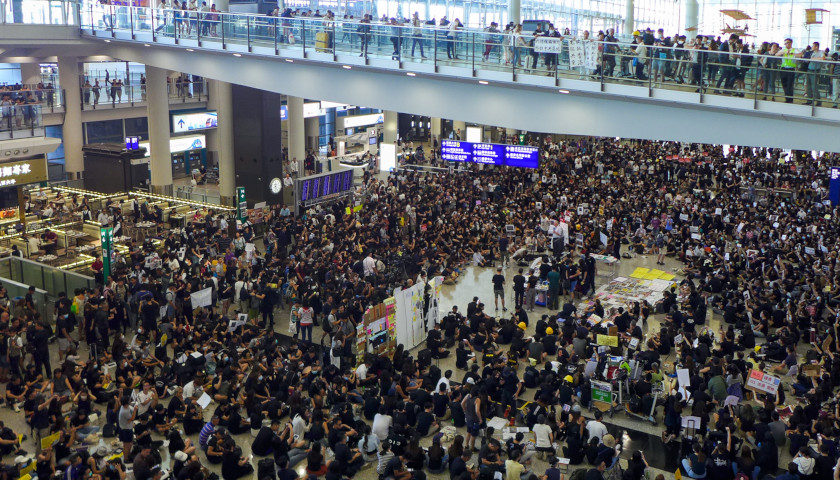The Hong Kong Airport Authority announced Wednesday that a judge granted an interim order to limit anti-government protests that crippled one of the world’s busiest air hubs for two days and sparked frantic clashes between demonstrators and riot police.
The order will limit demonstrations to designated areas, an attempt to suppress two days of seething crowds whose sheer size led the government and airlines to send home most employees and cancel nearly all flights leaving and entering the Chinese territory. That decision turned the airport into a frustrated campground, with stranded travelers unsure when they’d be able to leave, unable to buy food or find beds.
Flights resume
Arriving and departing flights through Hong Kong airport had largely resumed Wednesday, with just a few cancellations, according to the airport’s web site.
The judge’s order was made public after protesters on Tuesday night used luggage carts to barricade the airport’s passageways. Riot police unleashed pepper spray and batons to clear a path as protesters brawled with officers who tried to beat back the crowds.
Police arrested five people on charges that included unlawful assembly, possession of offensive weapons, assaulting police officers and breaching of the peace. Two police officers were injured.
Through the night, live TV carried harried scenes of police trying to clear increasingly defiant demonstrators who blocked ticketed passengers from boarding flights. In two instances, protesters themselves detained men reported to be from mainland China.
Clashes with police
Protesters barricaded the airport’s entrances and tossed objects and aimed laser beams at police officers. Riot officers stormed in, shooting pepper spray and swinging batons.
At some point, several demonstrators surrounded an officer who had forced a woman to the floor. One person grabbed the officer’s baton and lashed him before the officer raised his pistol and slumped to the ground, according to police and a video clip posted on Twitter.
At another moment, protesters surrounded and beat a journalist, reportedly from mainland China. Black-shirted picketers bound the man’s hands with plastic ties. After the man fainted, protesters prevented paramedics from reaching him. He was eventually spirited onto am ambulance after riot police cleared the way. Several demonstrators were arrested.
How it started
The arrival and departure halls at the airport became the site of large occupations starting Friday. The crowds swelled on Monday hours after police chased protesters through several business districts, firing tear gas guns and other so-called non-lethal ammunition directly at protesters and journalists, causing dozens of injuries.
Scenes of police chasing and clubbing fleeing people were broadcast live, fanning outrage and convincing many viewers that the police force is provoking, rather than protecting, the public.
The demonstrations began as a peaceful protest, a continuation of a 10-week fight to stop an extradition bill that would allow criminal suspects to be tried in other jurisdictions, including the opaque legal system of China.
Government reaction
The government’s silence has fueled a seething 10-weeks of strikes and street clashes that the government has tried to suppress by denying protest permissions and applying increasingly brute force.
Residents turned to the airport to demonstrate, in part to share their stories with international travelers, in part to seek refuge, thinking that riot police will never use tear gas around travelers.
More than 600 have been arrested since the anti-government protests surged in June, police said.
– – –
Photo “Hong Kong Airport Protests” by Wpcpey. CC BY-SA 4.0.




